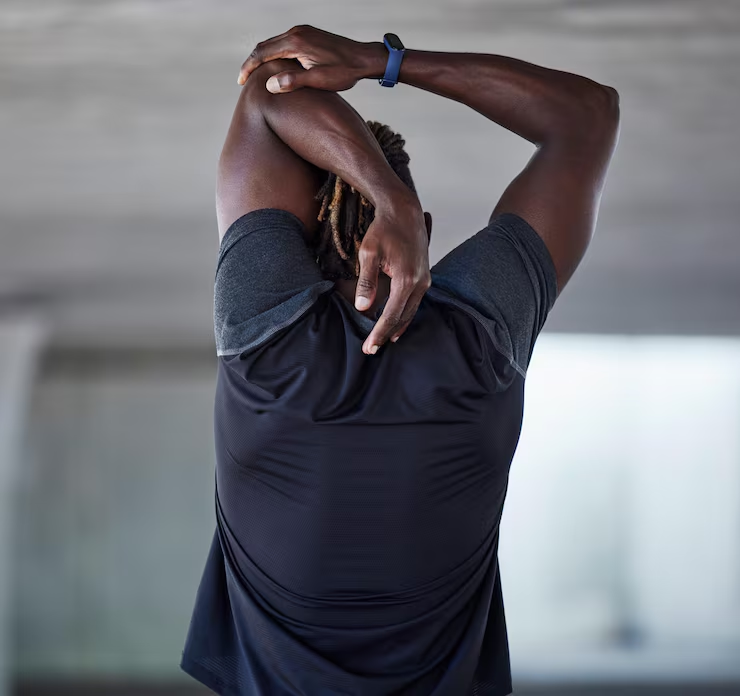Shoulder Tendonitis: Proven Recovery Tips for Athletes and Office Workers

Shoulder Tendonitis: Proven Recovery Tips for Athletes and Office Workers
Ever tried closing your car trunk one-handed, only for your shoulder to protest with a burning ache? That’s how my own tango with shoulder tendonitis began—a mild annoyance after playing pickup basketball that ballooned into Nope-This-Hand-Stays-Down real quick.
“Shoulder tendonitis (tendinitis) is inflammation in your rotator cuff or biceps tendon. It often results from sports injuries, repetitive stress, or poor ergonomics—basically, anyone can get it, not just athletes.”
What is Shoulder Tendonitis, Really?
Shoulder tendonitis is your body’s way of saying it’s had enough of the high-fives, overhead presses, or even endless hours tapping away at a keyboard. It’s an inflammation (occasionally swelling or irritation) of the tendons—usually in the rotator cuff or biceps.
Symptoms can range from “mildly annoying” to “who replaced my shoulder with gravel?” You might notice:
- A deep, aching pain at the tip of the shoulder or down the arm
- Pain that worsens with overhead movement (like waving at your rival)
- Stiffness, tenderness, or even weakness
- Clicking or popping sounds
- Sometimes, pain that wakes you up from your power nap
It afflicts sports pros (swimmers, pitchers, weightlifters) and sedentary office legends equally. Improper technique, poor posture, overuse, and simple aging can all trigger it—surprise! It doesn’t play favorites.
The Rotator Cuff Connection (Core Concept #1)
Meet Your Rotator Cuff: The “Holy Grail” of Shoulder Pain

The rotator cuff is a group of four muscles and their tendons, like tiny cables, keeping your shoulder joint stable. Rotator cuff tendonitis means these tendons are fibbing: “I’m fine,” while actually, they’re inflamed and irritated.
Athletes? You’re at high risk—think swimmers, baseball pitchers, tennis aces. Office workers aren’t safe either; repeated mouse-lifting or slouching at a desk can do the trick.
Symptoms include:
- Pain raising the arm overhead (the “don’t put your hands up” syndrome)
- Tenderness at the front or side of your shoulder
- Weakness or limited movement
- Sometimes, a click when you rotate the shoulder
Left unchecked, chronic inflammation weakens the tendon and may open the door to the next villain: the shoulder tendon tear.
Shoulder Tendon Tear: When Things Escalate (Core Concept #2)
Understanding the Shoulder Tendon Tear
A shoulder tendon tear is usually the dramatic sequel to untreated tendonitis or a bad fall. Think of it like frayed rope finally giving way. Tears can be partial (just a few fibers snap) or full-thickness (the tendon breaks in two).
- Symptoms: Sharp pain, sudden weakness, and—if you’re really unlucky—a loss of mobility. Ever tried putting on a coat and considered moving to the tropics instead? That’s the vibe.
“The tendon is generally repaired with arthroscopic (keyhole) surgery. Reattaching the tendon to bone restores function, but non-surgical physical therapy often helps in less severe or partial tears.”
Surgery is usually avoided unless the tear is bad, or other therapies haven’t cut it.
Case Study: When Shoulder Pain Takes a Toll
A 53-year-old avid swimmer developed severe pain after first lifting something heavy, then taking a tumble. He tried to tough it out, but ended up at a sports clinic, gritting through pain that scored 9 out of 10. The diagnosis? A total tear of the supraspinatus (one of those rotator cuff tendons), coupled with biceps tendonitis. He got pain relief (meds and manual massage) but real progress happened only after structured physical therapy—electrotherapy, warmth, and eventually, strengthening exercises. After patience (and no marathons in the meantime), he regained solid shoulder function.
Actionable Takeaways for the Urban Warrior (and Weekend Athlete)
Preventing and Managing Shoulder Tendonitis
- Adjust your posture: Don’t stoop over keyboards or phones. Sit up straight; your shoulder will thank you.
- Warm up and cool down before and after workouts—don’t skip!
- Respect your body’s limits, especially after a long break or new activity.
- If you feel pain:
- Rest (shoulders love a good break).
- Use ice for the first 48 hours, then switch between heat and ice.
- Consider NSAIDs if cleared by your provider.
When to See a Doctor
- If pain persists more than a week, worsens, or limits daily activity, time for a professional’s verdict.
- Physical therapy works wonders—don’t shrug it off (pun intended).
- Surgery is a last resort; most folks rebound with noninvasive care.
Conclusion
Shoulder tendonitis is the ultimate equal-opportunity nuisance. Whether you’re serving aces or serving spreadsheets, keep your shoulders in check. Listen to them—they’re whispering (or, frankly, yelling) what you need to tweak.
As Dr. Jared Powell, physiotherapist, puts it:
“The rotator cuff is the joint ‘Holy Grail’ of shoulder pain. Around 70-80% of all shoulder pain presentations are primarily rotator cuff related.”
So, next time your shoulder complains, don’t ignore it—show it some love, and you’ll be back swinging, typing, or high-fiving in no time (parenthetical aside: unless you’re into thumb wars, in which case, carry on).
FAQ Section (FAQPage Schema)
What is the difference between shoulder tendonitis and rotator cuff tendonitis?
Shoulder tendonitis is a broad term for inflammation in any shoulder tendon, while rotator cuff tendonitis specifically involves the tendons that stabilize the shoulder joint—mainly the supraspinatus, infraspinatus, teres minor, and subscapularis.
Can a shoulder tendon tear heal without surgery?
Partial shoulder tendon tears often improve with rest, physical therapy, and sometimes injections. Full-thickness tears may require surgery, especially if the tear is recent or you need full function for sports.
Is shoulder tendonitis caused only by sports?
Nope! While it’s common in athletes, sedentary lifestyles, repetitive work tasks, and poor posture are big culprits for shoulder tendonitis—even if you consider “lifting a coffee mug” a workout.
shoulder-tendonitis-city-athlete-guide
Meta Description
Shoulder tendonitis pain can strike athletes and office pros alike. Discover causes, symptoms, and the path to recovery—expert tips inside.
References
- Cleveland Clinic. “Shoulder Tendonitis: Causes, Symptoms, Treatment.”
- Mayo Clinic. “Shoulder Pain: Symptoms & Causes.”
- American Academy of Orthopaedic Surgeons (AAOS). “Rotator Cuff and Shoulder Problems.”
- Kilcoyne, K. G., et al. “Management and Prevention of Shoulder Overuse Injuries in Sports.” American Family Physician, 2019.
- Seitz, A. L., et al. “Shoulder pain and altered shoulder mechanics.” Physical Therapy Reviews, 2011.
- Powell, J. “Rotator cuff-related shoulder pain: Assessment, management and the role of imaging.” Clinical Journal of Sport Medicine, 2020.
- American Academy of Orthopaedic Surgeons (AAOS). “Rotator Cuff Tears.”
- Boileau, P., et al. “Arthroscopic repair of full-thickness tears of the supraspinatus: Outcomes at 2–20 years.” JBJS, 2017.
- Purushothaman, V., et al. “Case report: Supraspinatus tear and rehabilitation.” BMJ Case Reports, 2020.
- OrthoInfo/AAOS. “Shoulder Tendinitis and Bursitis: Prevention and Treatment.”

